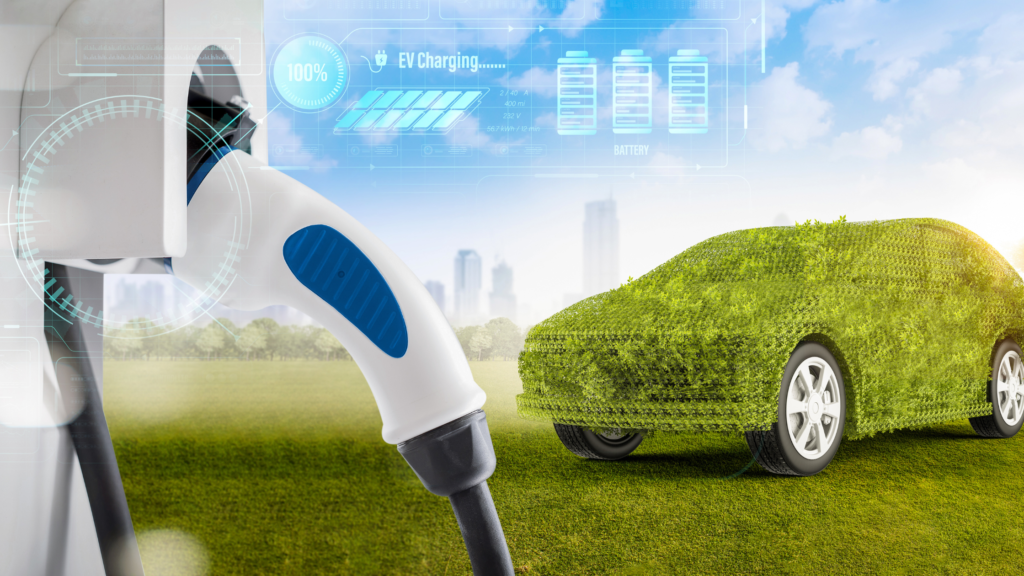Electric vehicles (EVs) are no longer just a futuristic dream; they are rapidly becoming the present and the future of transportation. With the increasing emphasis on sustainability, governments, and automakers worldwide are accelerating the transition toward electric mobility. But what does the future hold for EVs? This article explores the latest trends, breakthroughs, and the path forward for electric vehicles.
1. Advancements in Battery Technology
One of the most significant factors shaping the future of EVs is battery innovation. Current EVs are powered primarily by lithium-ion batteries, but new developments are pushing the boundaries of efficiency, charging time, and energy density.
Solid-State Batteries: Researchers are exploring solid-state batteries, which promise to deliver higher energy densities, longer ranges, and quicker charging times compared to traditional lithium-ion batteries. Companies like Toyota and QuantumScape are leading the charge to make this technology commercially viable within the next decade.
Faster Charging Technology: Charging times are expected to drop significantly in the future. Today, fast chargers can power an EV in under an hour, but ultra-fast charging could bring this time down to under 15 minutes. Brands like Tesla and Rivian are working to expand their network of fast chargers to make long road trips seamless.
Battery Recycling and Sustainability: As the demand for EVs grows, so does the need for sustainable battery production and disposal. Companies like Redwood Materials are focusing on recycling lithium, cobalt, and other precious metals from used batteries to create a circular economy, reducing environmental impacts.
2. Vehicle-to-Grid (V2G) Integration
Electric vehicles have the potential to be more than just modes of transportation; they could play a pivotal role in stabilizing energy grids. V2G technology allows EVs to send excess electricity back to the grid during peak hours, helping to balance energy supply and demand.
Energy Storage Solutions: Imagine a world where millions of EVs act as mobile energy storage units. During periods of low energy demand, vehicles could charge, and when the demand peaks, they can discharge energy back into the grid. This system could help reduce blackouts, especially in regions dependent on renewable energy, where supply fluctuates.
Smart Charging Infrastructure: In conjunction with V2G technology, smart charging stations are being developed to allow EV owners to schedule charging during off-peak hours or sell surplus energy back to the grid. These smart grids, combined with renewable energy sources like solar and wind, could revolutionize our approach to energy consumption.

3. Autonomous Electric Vehicles
Another key factor in the future of EVs is autonomy. Self-driving technology is advancing at an unprecedented rate, with companies like Waymo, Tesla, and Cruise testing autonomous EVs on public roads. While fully autonomous vehicles (Level 5) are still years away, semi-autonomous features (Level 3 and Level 4) are already becoming common in new models.
Urban Mobility Solutions: Autonomous EVs have the potential to transform urban transportation. Imagine fleets of self-driving, electric ride-sharing vehicles offering on-demand transportation services in cities, significantly reducing traffic congestion and pollution.
Safety and Efficiency: Autonomous EVs could make roads safer by eliminating human error, the leading cause of accidents. Moreover, these vehicles will likely be more energy-efficient, as they can optimize driving patterns and routes to reduce energy consumption.
4. Government Policies and Incentives
The role of government policy in accelerating EV adoption cannot be overstated. Many countries are setting ambitious targets for EV adoption and banning internal combustion engine (ICE) vehicles.
Zero-Emission Mandates: The European Union, the U.S., and China are leading the way in mandating zero-emission vehicle sales by as early as 2035. These mandates aim to phase out the production of gasoline and diesel vehicles, pushing automakers to go fully electric.
Incentives and Rebates: Many governments offer tax credits, rebates, and other financial incentives to encourage consumers to switch to EVs. Additionally, investments in charging infrastructure, such as the U.S. government’s plan to deploy 500,000 chargers by 2030, are crucial for mass adoption.

5. Sustainability and the Circular Economy
EVs are not only important for reducing emissions; they also have the potential to support broader sustainability goals through the concept of a circular economy. From the production process to the disposal of batteries, the EV industry is moving towards a more sustainable model.
Green Manufacturing: Automakers are exploring ways to reduce the carbon footprint of EV production. Companies like Tesla, Volkswagen, and General Motors are investing in green manufacturing techniques, such as using renewable energy in factories and sourcing materials responsibly.
Second-Life Batteries: After their use in vehicles, EV batteries can be repurposed for stationary energy storage systems, such as home energy grids. This extends the life of the batteries and reduces the need for new raw materials.
6. Global Market Expansion
While EVs have gained a foothold in developed countries, the next wave of growth will likely come from emerging markets. Countries like India, Brazil, and South Africa are ramping up efforts to adopt electric mobility, albeit at a slower pace due to infrastructure challenges.
Affordable EVs: To meet the demands of price-sensitive markets, automakers are developing more affordable EV models without compromising on range or performance. As battery costs continue to decline, these vehicles will become more accessible to a global audience.
Local Manufacturing: Emerging markets are also investing in local EV manufacturing to reduce import costs and create jobs. India, for instance, has introduced several initiatives to boost domestic EV production through subsidies and incentives for manufacturers.

Conclusion: A Brighter, Greener Future
The future of electric vehicles is bright, with advancements in battery technology, autonomous driving, and smart grids all contributing to a more sustainable world. While challenges remain, such as charging infrastructure and affordability in certain regions, the overall trajectory of EVs is positive. As more automakers shift their focus to electric models, and governments continue to push for greener transportation, electric vehicles will become the norm rather than the exception.
We are on the cusp of an electric revolution, and the journey ahead promises cleaner air, quieter streets, and a greener planet.
What are your thoughts on the future of EVs? Let us know in the comments below! For more insights and the latest in sustainable technology, keep following our blog at TrendOptimize.com!



